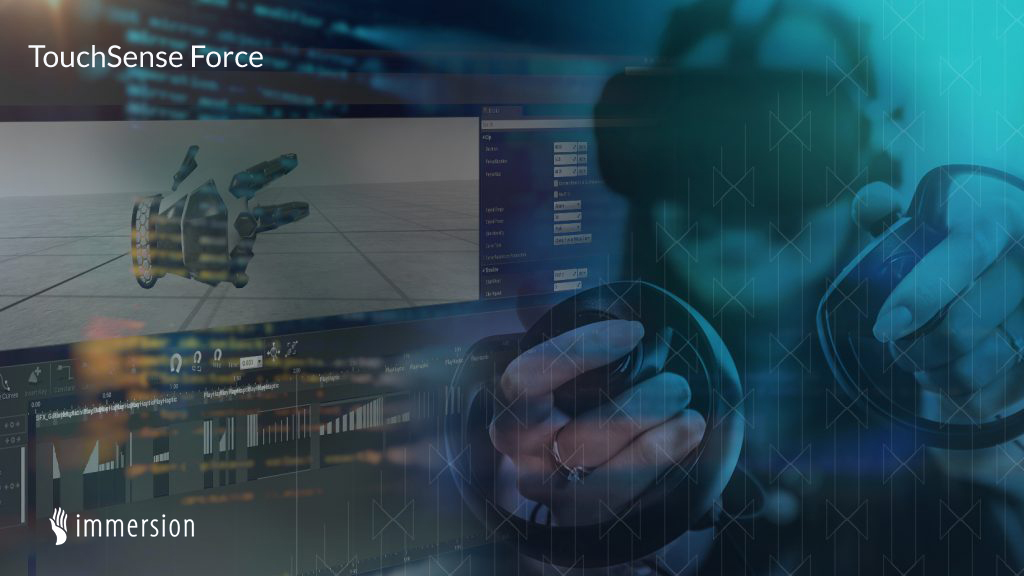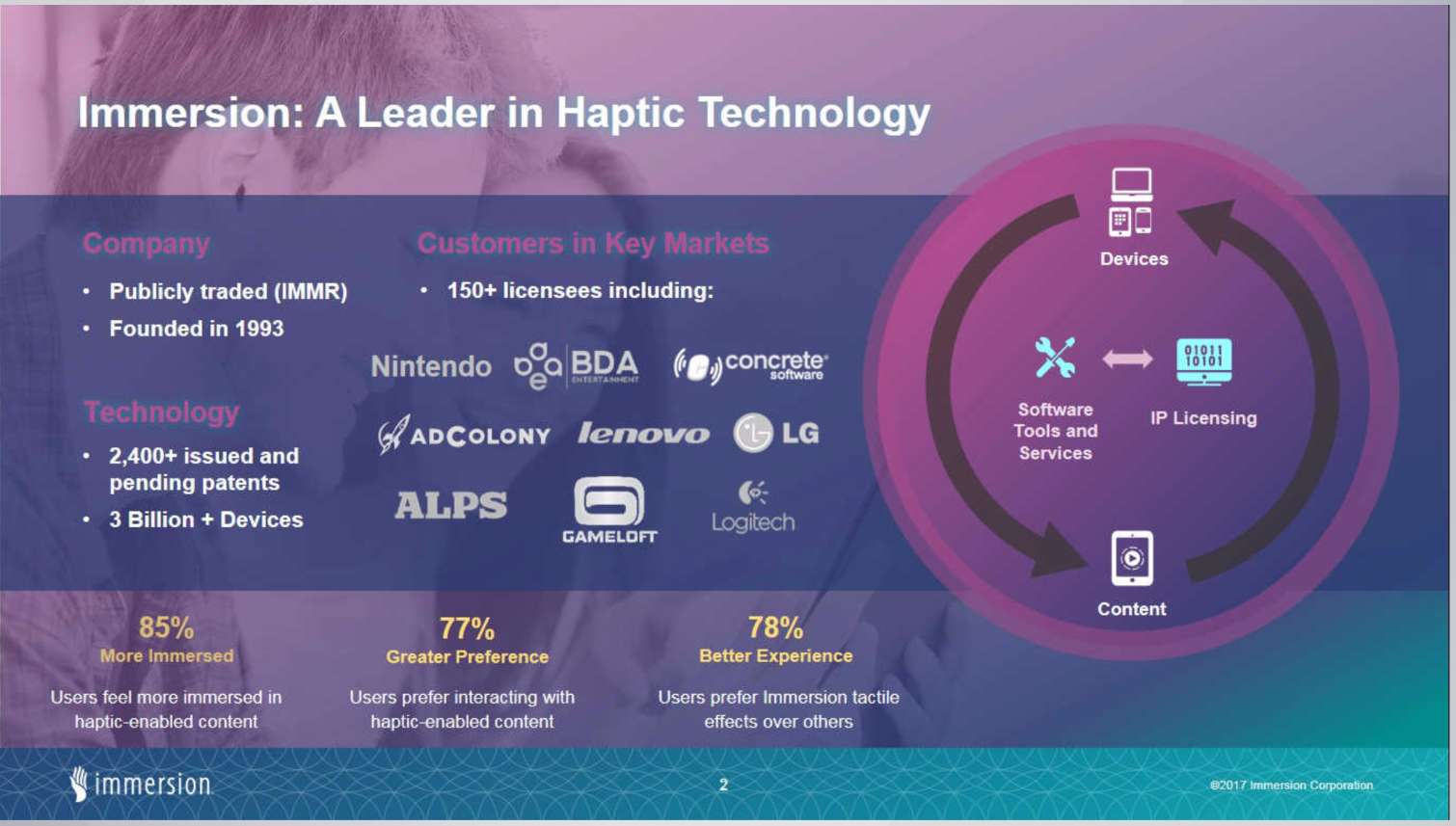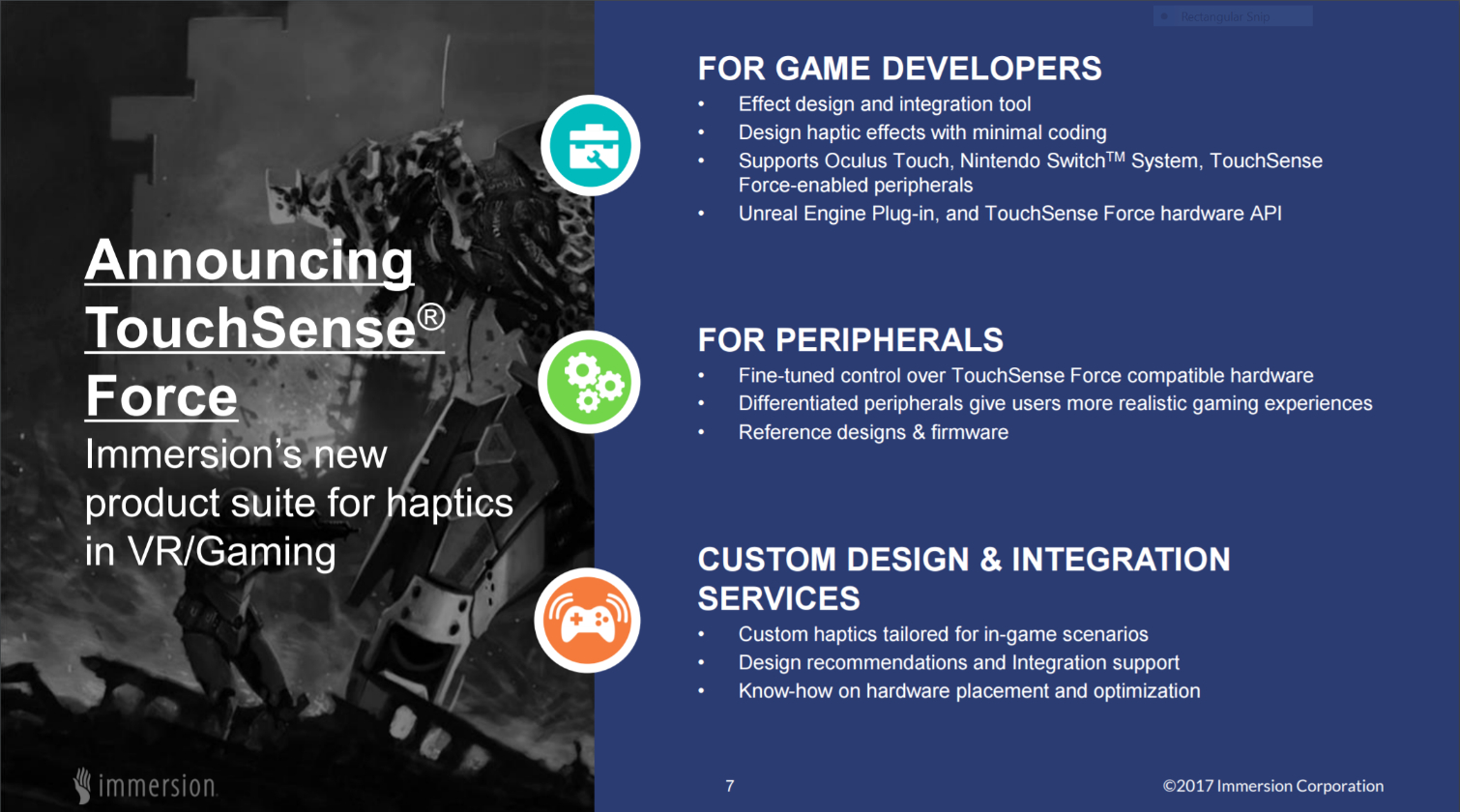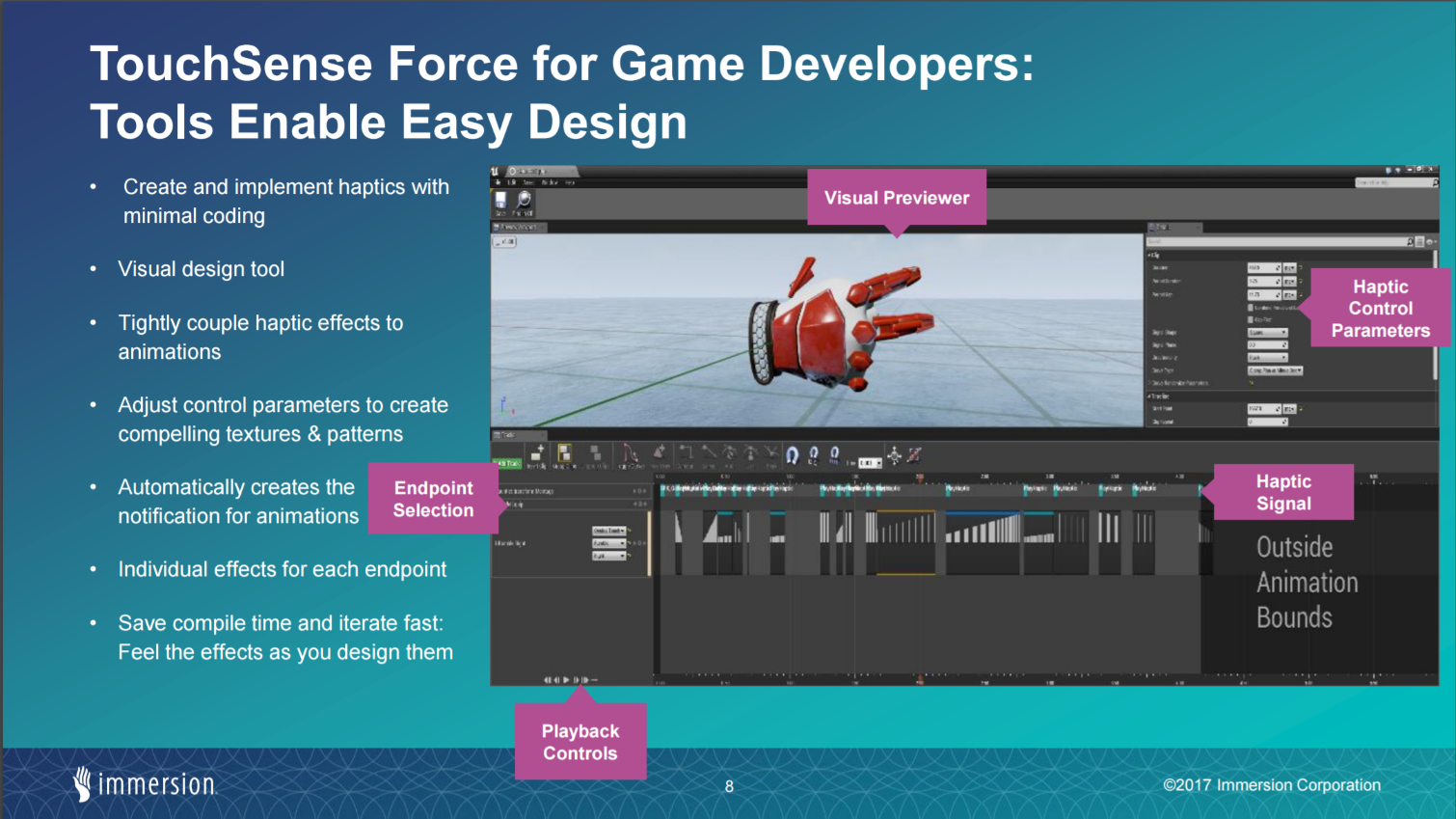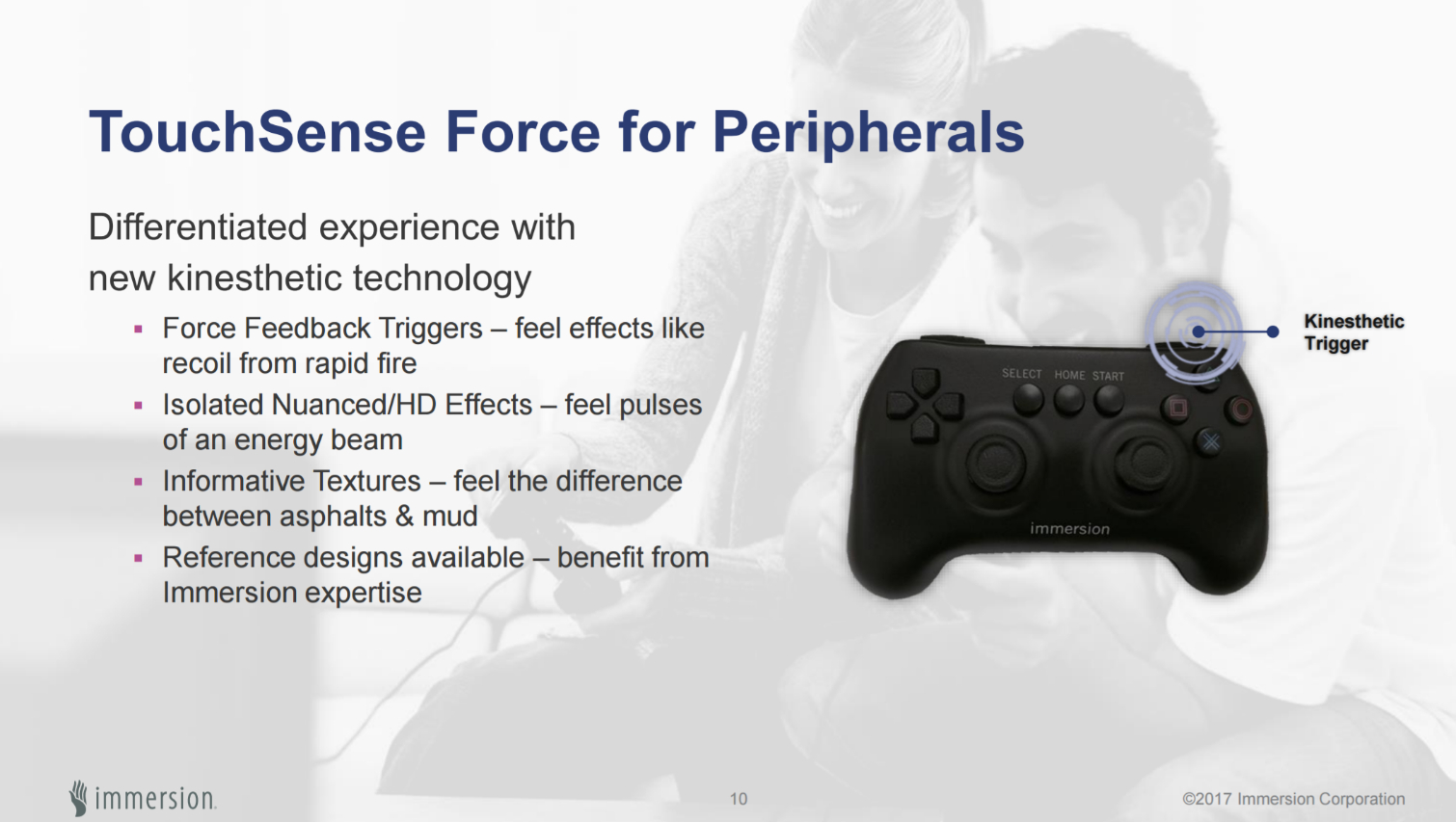Immersion Brings Haptics To Console, VR Markets With TouchSense
Be prepared to feel the digital world like never before. Immersion's TouchSense Force brings the company's TouchSense haptic feedback technology for mobile devices to the PC, VR, and console gaming markets.
TouchSense is Immersion’s haptic feedback technology for smartphone and tablet devices with touch screens. TouchSense technology takes advantage of the vibration hardware baked into your smart device to help trick you into thinking a digital button feels like a physical button. Immersion is now spreading TouchSense technology into other platforms and use cases.
If you’ve been gaming since the '90s, you’ve probably heard of Immersion before--even if you don’t remember the name. Immersion has a long history in the video game industry. The company planted its roots in 1993 when it started making technology for PC game peripherals such as racing wheels and flight simulator joysticks. In the early days, the company’s logo was regularly featured on the packages of the products that featured its technology. Anymore, the company plays more of a background role providing technology to other companies. Immersion has been servicing the mobile gaming and app industry with TouchSense haptic technology, but the company recently set its sights back on the console market and the burgeoning VR industry.
“We’ve invested heavily in research since [the 90s]. We’re a definitely a research-focused organization,” said Matt Tullis Immersion’s Director of Gaming & VR. “We hold over 2,400 patents now and [we] have customers in a wide variety of markets. The one that we’re most excited about is last month we announced that the Nintendo Switch would support TouchSense technology.”
Immersion’s January announcement stated that “with the Nintendo Switch system, game developers can now leverage the sense of touch, providing game players an incredible tactile experience that isn't currently available on any other game system.” At the time of the Nintendo announcement, it was natural to assume that the partnership meant the Nintendo Switch's display would enjoy TouchSense haptic feedback support, although that may not be the case. Immersion’s Touch Sense Force technology sounds an awful lot like the HD Rumble haptics system in the Nintendo Joy-Con controllers.
TouchSense Force is a mix of hardware and software technologies that help game developers and peripheral designers create “high-quality touch effects” for console, PC, and VR games. Immersion created visual tools to help game designers implement advanced haptic feedback into their games. The company also created a reference design for peripheral companies to follow, and it provides firmware that enables “greater control and higher fidelity” of existing haptic hardware.
“Haptics in gaming and virtual reality (VR) is in need of a creative, design-centered approach, and that is what inspired us to create TouchSense Force,” said Chris Ullrich, Vice President of User Experience and Analytics at Immersion. “By giving developers early access to this technology, we are helping them incorporate high-quality haptic effects into games on multiple platforms that have never felt more real.”
Get Tom's Hardware's best news and in-depth reviews, straight to your inbox.
Immersion created a visual design tool for TouchSense Force that gives developers the ability to incorporate haptics into multiple different platforms simultaneously with ease. Tullis said many development teams leave haptic feedback up to the sound engineer, so Immersion modeled its haptic feedback editor, which gives you fine control over the intensity and escalation of any vibration effect, after popular audio editing tools.
If you’re developing for more than one platform, you can add a profile for each one to create the instructions for each platform in the same animation. Tullis also said the haptic profiles synchronize to the animation and adapt to changes in the sequence. This means shortening a reload animation, for example, won't force you to redo the entire haptic profile. Tullis said that without a tool like Immersion’s haptic profile editor, developers would require custom code to adjust the haptics after editing the animation.
TouchSense Force technology allows developers to mimic the feeling of resistance in buttons and triggers or simulate the sensation of firing a weapon or being near an explosion. The technology can also imitate the feeling of grasping virtual objects, which could enhance immersive VR experiences.
The advanced haptic feedback that TouchSence Force offers isn’t available for just any peripheral. The hardware must be compatible with TouchSense Force technology, which means many devices won't receive retroactive support. Immersion’s advanced haptic technology leverages the ability of linear resonant actuators (LRAs) to pull off precision vibrations. LRAs operate like speakers: They vibrate at variable frequencies, and they can switch on and off many times per second, which makes them suitable for precise frequency changes.
Tullis declined to confirm my theory that the Nintendo Joy-Con controllers support TouchSense Force; he said he couldn’t comment about how a partner chooses to implement Immersion’s technology on an unreleased product, but his slideshow acknowledged the Nintendo Switch Console as a TouchSense Force compatible device. And this statement from Immersion’s CEO reinforces my suspicion:
"We are thrilled about the opportunity to work with Nintendo to bring Immersion's TouchSense technology to their customers," said Vic Viegas, CEO of Immersion. "Nintendo sets the bar with their gaming systems, and adding advanced touch effects will give them an additional edge in delivering an incredible gaming experience to their customers."
Immersion said that Oculus Touch controllers are compatible with TouchSense Force, but the company made no mention of support for the HTC Vive wand controllers. However, Immersion is working with third-party peripheral companies to bring TouchSense Force technology to market quickly.
Kevin Carbotte is a contributing writer for Tom's Hardware who primarily covers VR and AR hardware. He has been writing for us for more than four years.
-
Stephen_144 Aim for a VR gloves with full force feedback for each finger and then when a buttons etc is needed you can use a standard game controller and the controller itself can be projected into the VR sim as an AR object in your avatars hand within the VR world itself.Reply
